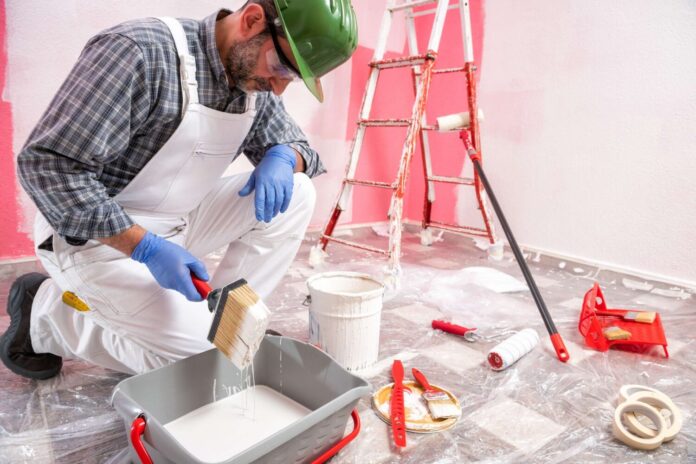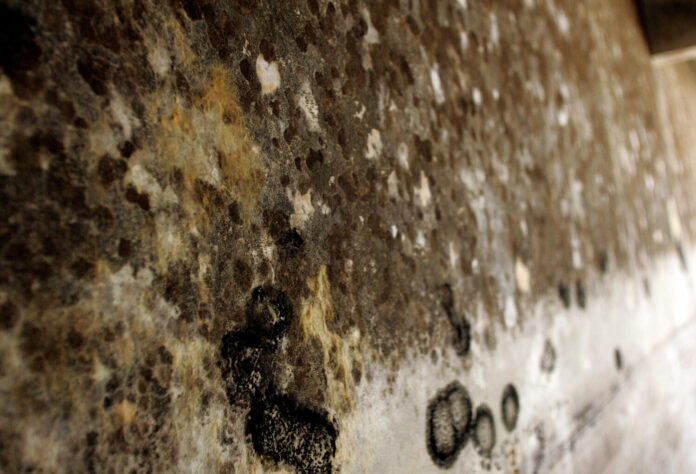You might be tempted to consider an anti-mould paint or chemical treatment in the hopes of permanently eliminating the issue if you have a mould problem in specific rooms of your house that keeps coming back despite how frequently or thoroughly you clean it.
How does anti-mould paint work?
Many DIY stores sell anti-mould paints, and while the precise ingredients vary from product to product, the majority of them contain Benzisothiazolinone, a chemical that fights mould. Mould growth is inhibited by Benzisothiazolone, a fungicide and microbicide found in a variety of household products. The Anti-Mould paint inhibits the growth of mould, but over time, it loses its effectiveness. If dampness, the mould’s primary cause, is not adequately addressed, the mould colonies will start to reappear. While anti-mould paint can be helpful in the short term, it will need to be reapplied on a regular basis to guarantee that the mould cannot grow back.

Features of anti-mould paints
Paints designed to prevent the growth of mould and mildew on painted surfaces are known as anti-mould paints. Usually, these paints have antimicrobial ingredients that either eradicate or stop the growth of mould and mildew on the painted surface. Typical antimicrobial ingredients in anti-mould paints include:
Silver ions: Silver is frequently used in anti-mould paints due to its antimicrobial qualities. As the paint dries, silver ions are released from the paint film, creating a barrier that inhibits the growth of mildew and mould.
Zinc oxide: Another typical antimicrobial ingredient in anti-mould paints is zinc oxide. It works well to prevent the growth of mould and mildew and is resistant to UV rays, which makes it a good option for outdoor surfaces.
Tea tree oil: Often found in environmentally friendly anti-mould paints, tea tree oil is a natural antibacterial agent. It smells good and works well to destroy mould and mildew.
Anti-mould paints usually contain additional ingredients in addition to antimicrobial agents that aid in inhibiting the growth of mould. These could consist of:
Water repellents: By keeping moisture from penetrating the paint layer, water repellents can lessen the chance that mould will grow.
Fungicides: are substances created expressly to destroy or prevent the growth of fungi, such as mould and mildew.
UV inhibitors: Over time, UV light can fade or change the color of paint. UV inhibitors help shield the paint film from these harmful effects.

Is anti-mould paint suitable for home?
Paints such as Glixtone anti mould paints contain biocides, which are substances designed to destroy mould. Although they are safe for people to come into mild contact with when used normally, the fumes released while the paint dries can be disagreeable and persist for a few days. Pets and small children should be kept out of the room until the paint is completely dry to prevent accidental contact as they should not be consumed in any amount.
How long does anti-mould paint work?
Anti-mould paint guards can work for five years against black mould growth on walls and ceilings. This does not imply that the paint will chip off in five years or that mould will develop right away once the five years have passed. It’s likely that the paint’s antifungal qualities have worn off after five years. This means that if there are still conditions in your home that allow mould growth, the mould will eventually return and you will have to repeat the removal and painting process. On the other hand, if you spent the five years making the space uninhabitable for mould and added regular ventilation, it might not come back.

Is anti mould paint a long term solution?
The paint will last longer if you have a very minor mould problem, but it won’t last as long in properties with a serious underlying damp problem, and you might have to repeat the treatment every few months. This can be inconvenient if the brand you choose needs to be removed before a new treatment is applied. When the paint’s fungicide ingredients lose their effectiveness, you might notice tiny patches of mould forming in places where they can spread swiftly. They will take longer to develop than they would have if the paint hadn’t been applied, but eventually they will spread out. To stop mould growing permanently, you must deal with the underlying damp issues that cause the mould to grow in the first place.
Symptoms of mould exposure
Because mould spores are easily respired and invisible to the naked eye, they can have a serious negative impact on your immune system and respiratory system. If you have a mould allergy or have been exposed to mould for an extended period of time, you may experience the following symptoms when in mouldy environments.
- Scaly, dry skin congestion in the nose
- A cough
- Teary eyes
- A compromised defense mechanism
Although each person’s symptoms may differ, if you encounter these symptoms while in a mouldy environment, do everything in your power to have the mould removed as soon as you can.

Are all homes vulnerable to mould?
Yes, if the area is not treated for ventilation or has holes and cracks sealed, mould growth may occur in any home or building. mould is a serious threat that you should never ignore. If left untreated, a small amount can grow into a large patch that will harm not only your home but also your health. It is always advisable to mould-proof your home and to get rid of any mould as soon as you can.
Removing the cause of mould
Mould typically develops as a result of moist areas on walls and ceilings. Since condensation on cold surfaces frequently results in moulds you must address the condensation that fosters a mould-friendly environment in order to prevent mould. Improving the airflow in your house to remove humid and moist air through extractor fans or a multi-room ventilation system is the most efficient method of preventing condensation.

Speak with a local ventilation specialist if you’re worried about mould growth in your home and want to get rid of it for good. They can conduct a free survey of your house to find any possible damp causes and can then advise you on the best course of action to permanently resolve the problem. Better ventilation eliminates the conditions that give mould a chance to grow, which helps lessen the amount of allergens released in the form of mould spores, which can be problematic for those who have asthma or other respiratory disorders.









